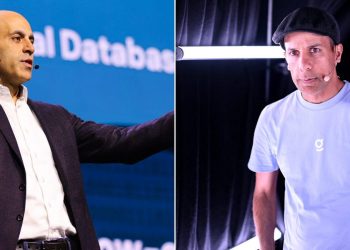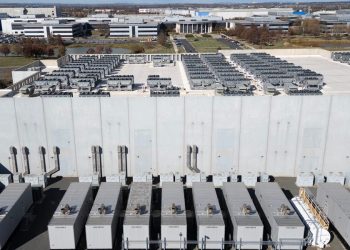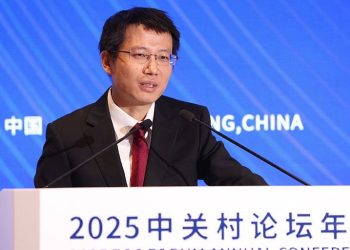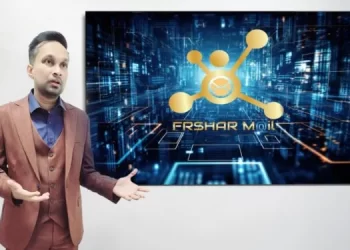- Hewlett Packard Enterprise and Nvidia are teaming up to simplify generative-AI adoption.
- The product integrates Nvidia AI computing with HPE’s storage, computing, and cloud offerings.
- This article is part of “CXO AI Playbook” — straight talk from business leaders on how they’re testing and using AI.
Companies see the potential of generative AI in streamlining tasks and creating efficiencies across their businesses. But they don’t always have the knowledge or resources to start using the technology.
Hewlett Packard Enterprise and Nvidia recently announced a portfolio of AI solutions, called Nvidia AI Computing by HPE, to make it easier for companies of all sizes to adopt AI.
Fidelma Russo, the chief technology officer and executive vice president of hybrid-cloud business at HPE, said the solution came about after the company learned that most of its customers were interested in generative artificial intelligence and wanted to implement it quickly. “But there are a lot of barriers to getting started quickly,” she said.
The product integrates Nvidia AI computing, networking, and software with HPE’s AI storage, computing, and cloud offerings. Russo said it uses templates and a drag-and-drop experience to make it easy for users without expertise to develop AI models.
The tool is in beta testing and set to be available in the fall, she said. Business Insider spoke with Russo about how the HPE-Nvidia product could help companies overcome AI challenges.
The following has been edited for length and clarity.
What pain points do businesses face when implementing AI?
You have to get a lot of data together to feed this new technology — generative AI. That’s one barrier. No. 2 is you have to figure out how to use the new technology. And No. 3 is you have a lot of infrastructure that you have to get set up.
We can help eliminate a lot of those pain points with this product. It helps you bring together your data quickly with a number of the technologies that we have. It brings together our software assets so that you can get up and running fast with a few clicks. It helps eliminate a lot of the mistakes that you can make along the way by having the whole thing automated so that many of the human steps are taken out of the way.
How does the product work?
If you want to deploy a gen-AI chatbot, for example, you typically have to decide what kind of model to use. You have to get all of your data together and all of your hardware and software, including storage and graphics processing units, from somebody like HPE or Nvidia and set it all up. Maybe after six to nine months, you would have a trained model that’s going to work.
What we’ve done with Nvidia is have these pre-canned models, and they’ve been potentially pretrained. You bring along your own data and personalize it. Your chatbot or other AI model is up and running in a fraction of the time.
It’s driven by drag and drop and templates. It’s very easy to use. You don’t have to move your data; it can stay where it is. We have a data fabric that goes out and points to your data.
We really focused on making sure this is easy for people to navigate and taking the mystery out of using these gen-AI models and getting you to what you’re trying to do.
What benefits does the product offer businesses?
It’s all-around productivity for businesses. The promise of gen AI is about getting usefulness from all of the data that everybody has across their business. It’s using gen AI to take all the knowledge that companies have generated over many years and do the mundane activities very quickly — such as to increase customer service or to help developers generate code faster.
A company using the technology ends up with a significant competitive advantage within an industry. That’s why they want to leverage gen AI.
The data that companies have is so important. One of the hardest things about implementing gen AI is getting at your data, and we can help you access your data. This is one of the problems that we have solved to help customers get started on this journey.
- Hewlett Packard Enterprise and Nvidia are teaming up to simplify generative-AI adoption.
- The product integrates Nvidia AI computing with HPE’s storage, computing, and cloud offerings.
- This article is part of “CXO AI Playbook” — straight talk from business leaders on how they’re testing and using AI.
Companies see the potential of generative AI in streamlining tasks and creating efficiencies across their businesses. But they don’t always have the knowledge or resources to start using the technology.
Hewlett Packard Enterprise and Nvidia recently announced a portfolio of AI solutions, called Nvidia AI Computing by HPE, to make it easier for companies of all sizes to adopt AI.
Fidelma Russo, the chief technology officer and executive vice president of hybrid-cloud business at HPE, said the solution came about after the company learned that most of its customers were interested in generative artificial intelligence and wanted to implement it quickly. “But there are a lot of barriers to getting started quickly,” she said.
The product integrates Nvidia AI computing, networking, and software with HPE’s AI storage, computing, and cloud offerings. Russo said it uses templates and a drag-and-drop experience to make it easy for users without expertise to develop AI models.
The tool is in beta testing and set to be available in the fall, she said. Business Insider spoke with Russo about how the HPE-Nvidia product could help companies overcome AI challenges.
The following has been edited for length and clarity.
What pain points do businesses face when implementing AI?
You have to get a lot of data together to feed this new technology — generative AI. That’s one barrier. No. 2 is you have to figure out how to use the new technology. And No. 3 is you have a lot of infrastructure that you have to get set up.
We can help eliminate a lot of those pain points with this product. It helps you bring together your data quickly with a number of the technologies that we have. It brings together our software assets so that you can get up and running fast with a few clicks. It helps eliminate a lot of the mistakes that you can make along the way by having the whole thing automated so that many of the human steps are taken out of the way.
How does the product work?
If you want to deploy a gen-AI chatbot, for example, you typically have to decide what kind of model to use. You have to get all of your data together and all of your hardware and software, including storage and graphics processing units, from somebody like HPE or Nvidia and set it all up. Maybe after six to nine months, you would have a trained model that’s going to work.
What we’ve done with Nvidia is have these pre-canned models, and they’ve been potentially pretrained. You bring along your own data and personalize it. Your chatbot or other AI model is up and running in a fraction of the time.
It’s driven by drag and drop and templates. It’s very easy to use. You don’t have to move your data; it can stay where it is. We have a data fabric that goes out and points to your data.
We really focused on making sure this is easy for people to navigate and taking the mystery out of using these gen-AI models and getting you to what you’re trying to do.
What benefits does the product offer businesses?
It’s all-around productivity for businesses. The promise of gen AI is about getting usefulness from all of the data that everybody has across their business. It’s using gen AI to take all the knowledge that companies have generated over many years and do the mundane activities very quickly — such as to increase customer service or to help developers generate code faster.
A company using the technology ends up with a significant competitive advantage within an industry. That’s why they want to leverage gen AI.
The data that companies have is so important. One of the hardest things about implementing gen AI is getting at your data, and we can help you access your data. This is one of the problems that we have solved to help customers get started on this journey.










